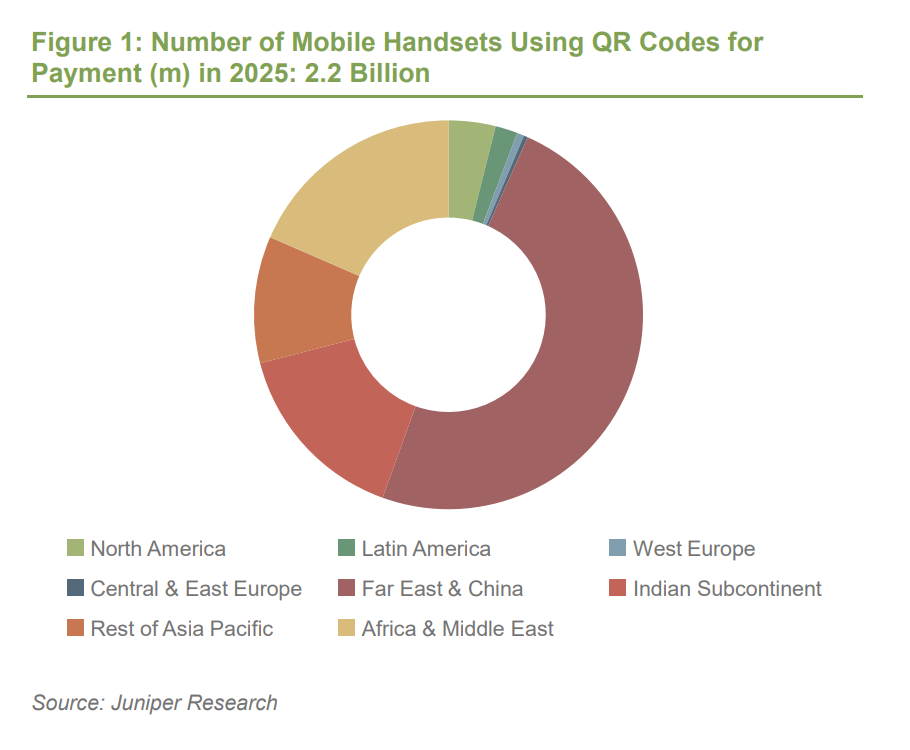
QR Code Payment Users to Reach 2.2 Billion Globally by 2025
by Fintech News Singapore January 11, 2021A new study from Juniper Research has found that the total number of QR code payment users will exceed 2.2 billion in 2025, up from 1.5 billion in 2020, which is equals to 29% of all mobile phone users across the world in 2025.
The QR Code Payments: Beyond China & India Whitepaper predicts that much of this growth will be within emerging markets, where weak card infrastructure creates a strong opportunity.
However, the research also found that the US will see a strong growth of 240% in user numbers between 2020-2025, as QR code payments tap into the need for cashless payments stimulated by the pandemic.
The research identified PayPal’s roll-out of QR payments and its partnership with CVS, an American retail corporation, as key drivers of the renaissance of QR payments within the US market.
 Boosting Merchant Acceptance Essential to Growing Ecosystem
Boosting Merchant Acceptance Essential to Growing Ecosystem
The new research, QR Code Payments: Key Opportunities, Regional Analysis & Market Forecasts 2021-2025 research, identified that QR codes’ ability to combine payments and loyalty make them ideal for retailers seeking to leverage valuable transactional data.
The low-cost nature of these solutions will enable the growth of QR code payments to reach over $2.7 trillion globally in 2025.

Nick Maynard
Research author Nick Maynard explains:
“QR code payments have low acceptance costs versus contactless payments, meaning that they are highly competitive and appealing to retailers in emerging markets, which lack card infrastructure.
However, the low costs mean that accepting QR codes alongside cards is also viable. Partnerships in developing markets will be critical to driving QR adoption.”
National QR Code Payment Schemes Driving Growth
The research found that national QR code payment standards, such as SGQR in Singapore, will be major accelerators to the growth of QR code payments. SGQR can be found at more than 160,000 merchant acceptance points. GrabPay is one example of a payment system built on top of the standard, which is experiencing rapid growth.
By 2025, national QR code payment schemes will account for 22% of all QR code payments by volume, compared with just 8% in 2020.
The research recommends national regulators make QR schemes a priority, to ensure widespread digital payments adoption and interoperability of payment methods.
Featured image credit: Unsplash







